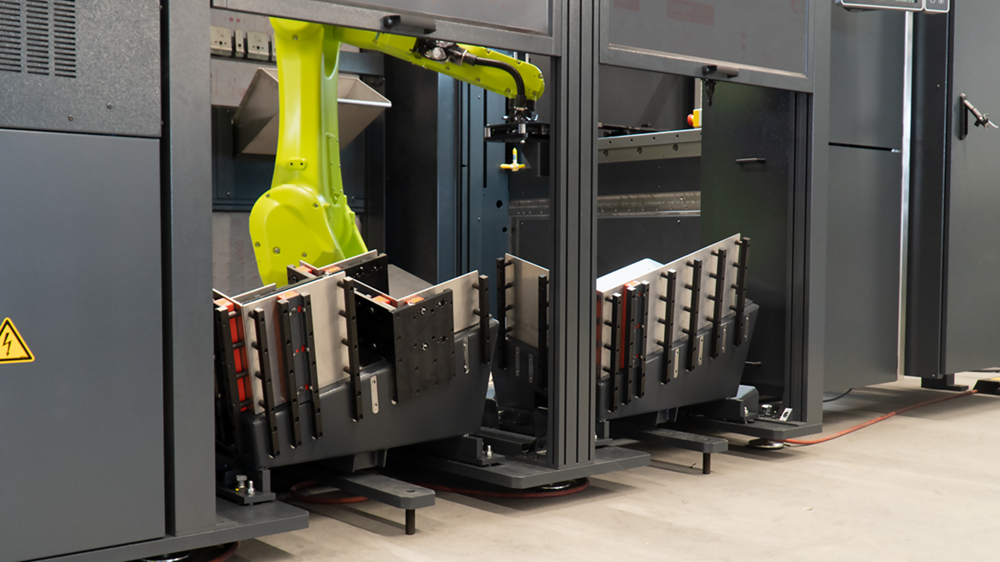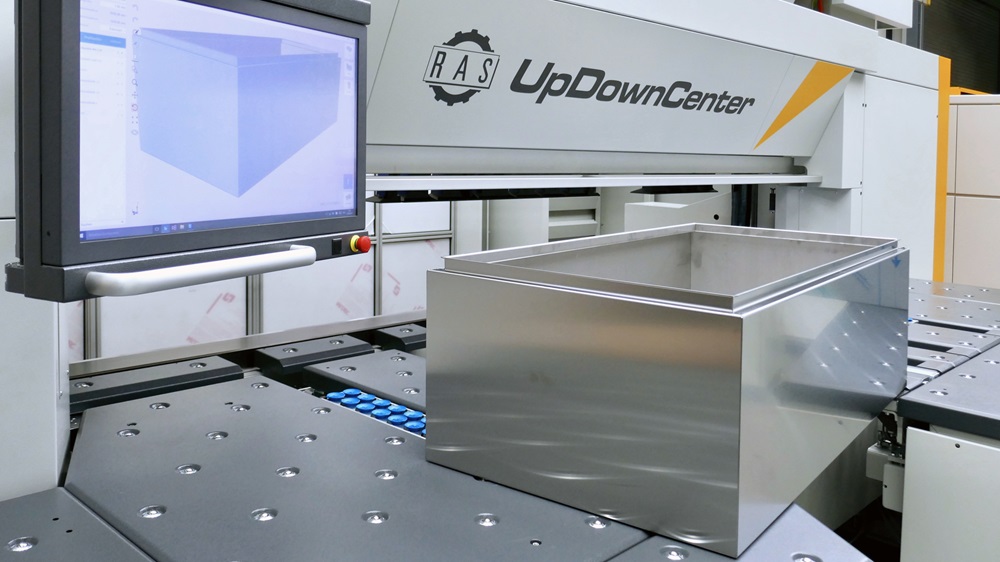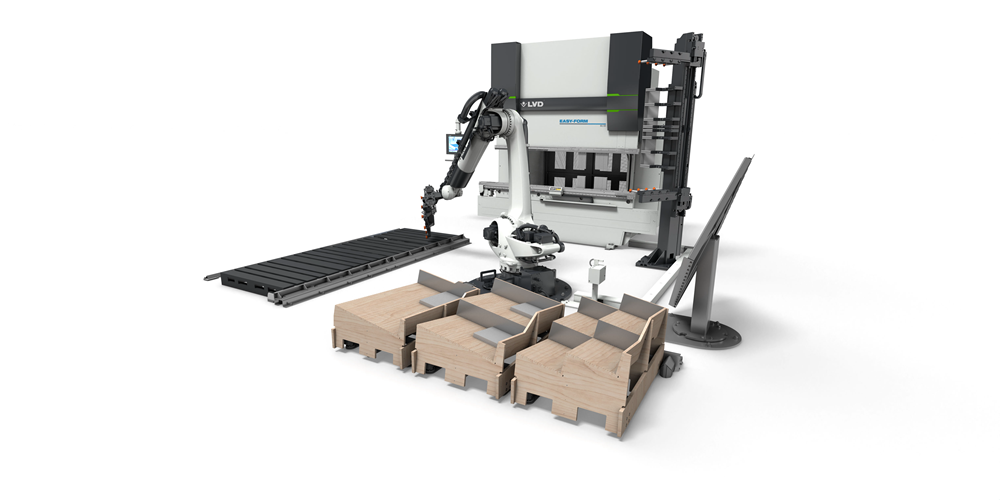By choosing the SafanDarley E-Brake Mini Cell, metalworking specialist GS Metaal is able, to automate the bending of a wide variety of products up to 900 mm in length in a relatively small area.
Nowadays, skilled people are difficult to find. GS Metaal, based in Vriezenveen, Netherlands, wants to keep these people available for specific products which are complex to manufacture. With the SafanDarley E-Brake 35T Mini Cell, the company is able to manufacture repetitive items in batches.
To keep the Mini Cell running even at night, GS Metal has expanded the cell to include, among other things, a positioning conveyor to ensure that items are placed properly on pallets and can be removed automatically.
“It’s nice to see that when I am the last to leave there is still ‘someone’ working,” says a GS Metal representative. “The entire purchase process with SafanDarley went very smoothly and we were well informed at every stage. Recently, two employees successfully completed an offline course in robot simulation software RoboBend and are enjoying working on this machine.”
The E-Brake 35T Mini Cell is a compact automatic flexible bending cell equipped with a 25 kg FANUC robot serving a SafanDarley E-Brake 35T-1250 press brake. The E-Brake 35T Mini Cell is suitable for fully automatic production of small complex products. It also allows successive bending of different products without intermediate programming. By adding various options, such as an automatic gripper, tool changer, reversing stations, and infeed and outfeed systems, this machine is fully configurable to customer specifications.
As standard, the table stations in the E-Brake 35T Premium Mini Cell feature precision adapters that guarantee a fixed position, making it possible to have several different tables that are easy to change in accordance with requirements.
More information www.safandarley.com



















